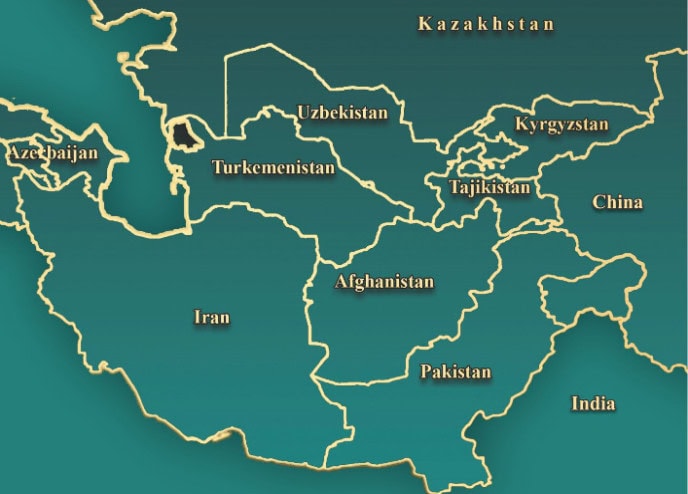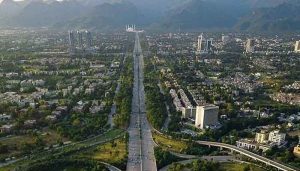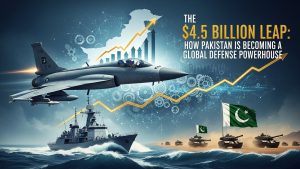For the first time, Pakistan’s National Security Policy (NSP) 2022-2026 articulates a citizen-centric Comprehensive National Security Paradigm, which defines the national purpose as the safety, security, dignity, and prosperity of Pakistan’s citizens.
This paper finds it relevant to substantiate the argument by reviewing a report on the NSP’s geoeconomic vision, “Pakistan’s Geo-Economic Pivot: Strategies, Opportunities, and Challenges” by Dr Moeed Yusuf and Dr Rabia Akhtar. The report lays out the meaning and implementation strategies of Pakistan’s geoeconomic pivot, presenting a decisively optimistic outlook on Pakistan’s economic geography.
The report, comprising four sections, initiates the debate on the concept of geoeconomics in the ‘Introduction’. There is a difference in the interpretation of geoeconomics in the West and Pakistan. The idea in the Cold War was essentially a hardcore Machiavellian statecraft element that used economic instruments to achieve geopolitical goals. However, Pakistan advances a ‘cooperative geoeconomic framework’ that puts the country at the centre of becoming a positive hub of interdependence for regional and extra-regional countries. Mark Saxer, an international political economist, considers geoeconomics as a shorthand for the impact of geopolitical competition on the global political economy and how it is changing and shifting the opportunity structures for developing countries.
Pakistan’s historical economic model over the past seventy-five years is based on selling the country’s relevance and security strength to gain economic inflows. The problem with this model is that it only works till Pakistan remains relevant, and once that relevance disappears, the economic inflows dry up. Another problem with this model is that Pakistan has not been able to redistribute and capitalise on those inflows to create a sustainable financial model at home. Pakistan’s GDP growth rates, especially when it was within the strategic calculus of the world powers, had a correlation, which disappeared when the country did not remain relevant to them. Post-Cold War, Pakistan lost its strategic positive relevance to the US-led West in their competition with China.
 The NSP suggests regional connectivity and development partnerships as solutions. While expounding on the implementation of the framework, the report first underscores the country’s position at the confluence of three broad regions—Asia Pacific, Middle East, and Central Asia. However, these regions are subject to significant power rivalries, meaning sparks of competition will emerge from them.
The NSP suggests regional connectivity and development partnerships as solutions. While expounding on the implementation of the framework, the report first underscores the country’s position at the confluence of three broad regions—Asia Pacific, Middle East, and Central Asia. However, these regions are subject to significant power rivalries, meaning sparks of competition will emerge from them.
Moreover, it will likely fall on Pakistan unless the country develops shields to guard against those.
To avoid being a playball of great powers, the second section offers three fundamental concepts. One is looking at Pakistan’s neighbourhood, which can provide several opportunities to connect with multiple regions. Through the Karachi-Kabul-Termez route, Pakistan’s North-South connectivity is gaining momentum through the successful Transports Internationaux Routiers’ (TIR) shipments to Uzbekistan. Besides, road and train corridors have become operational for consignments to China and CARs. However, East-West connectivity is still at a halt due to Indian hostility. Moreover, in pursuance of the economic cooperation model, Pakistan must strive to bring different regional initiatives, like the Trans-Afghan Railway Project, Turkmenistan-Afghanistan-Pakistan-India (TAPI) gas pipeline, Central Asia-South Asia 1000 Project (CASA-1000), and Iran-Pakistan gas pipeline etc., to a logical conclusion.
Pakistan’s regional connectivity cannot gain momentum unless East-West and North-South connectivity work simultaneously. The report subtly hints at this aspect when citing the intra-regional trade figures of different regions. 60 % of European trade is within Europe, 35% of East Asian trade is within East Asia, and South Asia stands at less than 5%. The World Bank report shows significant trajectories in the chart to liberalise Pakistan’s intra-regional trade, specifically East-West connectivity.

By leveraging Pakistan’s geographic location and through effective economic diplomacy, the country can develop economic interdependence with the world and become prosperous.
For the concept of development partnerships in section three, the report underlines the importance of moving from assistance-based to development-based partnerships. Pakistan is trying to expand its resource pie of foreign inflows through equal / mutually beneficial development partnerships. Pakistan is part of many frameworks of cooperation like the Economic Cooperation Organisation (ECO), Shanghai Cooperation Organisation (SCO), China–Pakistan Economic Corridor (CPEC), Central Asia Regional Economic Cooperation (CAREC), etc. To fully benefit from such frameworks and other trade groupings, it must be proactive to have non-debt-raising revenue, specifically through exports, FDI, and workforce export.
In response to labelling the economy with security, the report opines that the NSP does not deal with the nitty-gritty of the economy but underpins the strategic thinking that comprehensive national security with importance to economic security has to be the way forward. For this purpose, economic diplomacy is the key. Pakistan has to create structure even with the meagre productivity and financial problems to create an economic dividend for other countries. That is how Pakistan will become more stable and generate interdependence with other countries, thereby raising the costs of undermining Pakistan for all those inducements aimed at the country.
Conducting economic diplomacy without giving up on Pakistan’s national security interests would be challenging. One must overcome the mental constraint of what would happen to Pakistan’s geostrategy when it pursues the geoeconomic paradigm. The report underscores the need to develop a political consensus for policy continuity among all stakeholders while being aware of the status quo that resists change as the beneficiaries of the business-as-usual system.













